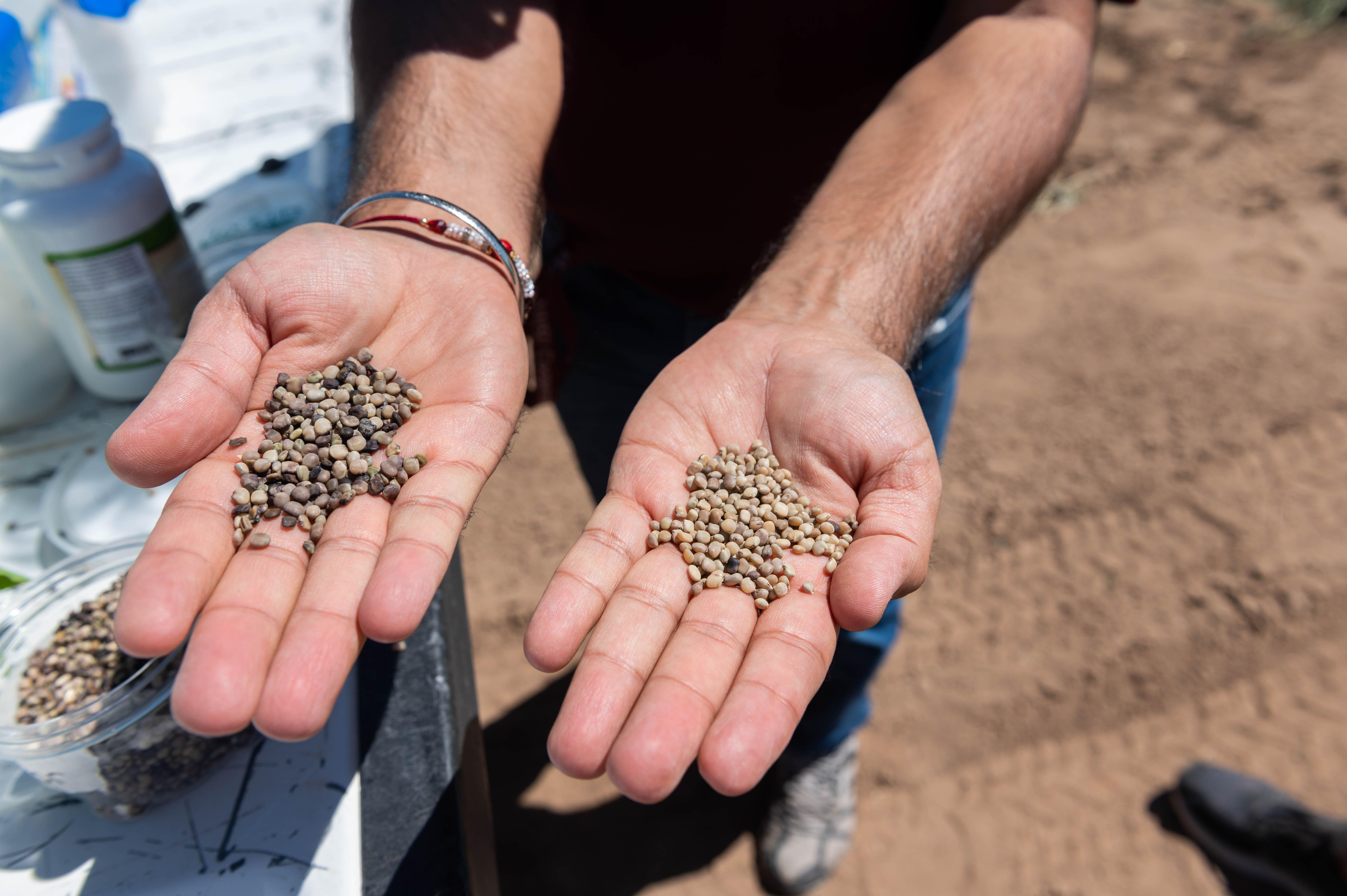New Mexico, USA
May 25, 2022

Kulbhushan Grover, a researcher in New Mexico State University’s College of Agricultural, Consumer and Environmental Sciences, gives a presentation at NMSU’s Fabián García Science Center in September 2021. Grover’s research findings show guar can be successfully adapted to grow in semi-arid desert regions like New Mexico because of its ability to tolerate heat and water stress. (NMSU photo by Josh Bachman)
Bright green and rich in protein, guar reigns supreme in Kulbhushan Grover’s native country.
Grover, a researcher in New Mexico State University’s College of Agricultural, Consumer and Environmental Sciences, hails from India, the world’s top producer of guar, a humble legume that grows in clusters and has many industrial uses.
“It is one of the most drought-tolerant plants we are looking at as an alternative crop for areas like New Mexico because of water issues,” Grover said.
Grover, who specializes in sustainable crop production, has initiated research efforts at NMSU to evaluate guar for its adaptability in New Mexico.
Grover said guar thrives in arid regions of the world. About 80 percent of the world’s guar supply comes from India, and the United States is one of the biggest guar importers.

Kulbhushan Grover, a researcher in New Mexico State University’s College of Agricultural, Consumer and Environmental Sciences, holds guar seeds during a presentation at NMSU’s Leyendecker Plant Science Research Center in August 2021. Grover, who specializes in sustainable crop production, has initiated research evaluating guar for adaptability in New Mexico. (NMSU photo by Josh Bachman)
Guar – which means “cow food” in Hindi – is commonly used as a protein-packed forage for livestock or consumed as a fresh vegetable much like its closely related cousin, the string bean.
Guar gum – derived from the endosperm of guar seeds – is widely used as a stabilizing or emulsifying ingredient in many food products and cosmetics.
Guar gum’s unique viscosity properties also make it beneficial in the energy industry, Grover said. Oil companies use guar gum to stabilize water and sand mixtures when extracting gas or oil via drilling.
“Guar is very useful in so many industries,” Grover said. “But if we focus on the oil industry – which is one of the biggest industries – we are talking about hundreds of millions of dollars in a guar product.”
Grover said the demand for guar gum in the oil industry alone far exceeds supply. Currently, there is only one guar processer in the U.S., he added.
“There’s a huge potential that we can tap into to grow guar domestically,” he said.
For that reason, Grover views guar as a lucrative crop for New Mexico growers.
He began his research into guar adaptability several years ago, establishing research plots at the Fabián García Science Center and Leyendecker Plant Science Research Center in Las Cruces.
Grover’s research findings show guar can be successfully adapted to grow in semi-arid desert regions like New Mexico because of its ability to tolerate heat and water stress.
“For many years, I worked in one of the main guar-producing areas in India,” he said. “When I arrived in the U.S., I saw we spend a lot of money importing this stuff. That is why I started this research because we have a similar climate here in New Mexico, which is ideal for growing guar.”
Over the years, Grover has worked with various collaborators to support his research, including faculty and students from the Plant and Environmental Sciences Department. He has also collaborated on guar-related projects with the University of Arizona and Texas Tech University and received grants from the U.S. Department of Agriculture’s National Institute of Food and Agriculture to fund his research.
On top of his research projects, Grover is a dedicated educator. He teaches popular courses in plant sciences and sustainable crop production, and his award-winning teaching approaches emphasize experiential learning and organic agriculture.
In 2021, Grover was the lead principal investigator from NMSU who was part of a team of collaborators from New Mexico, Texas and Florida who received a $1 million grant to help train Hispanic students to conduct research in the agricultural sciences.
“Teaching is where my passion is,” he said.